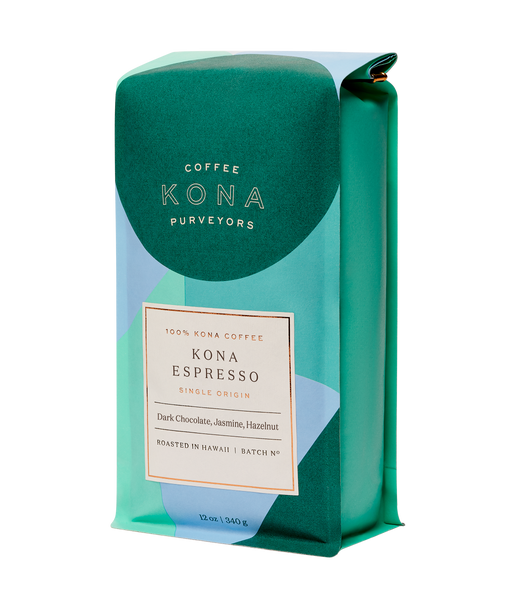Understanding Coffee Beans: the Journey From Espresso to Blended Coffee Beans

The Origins of Coffee: An International Viewpoint
While you may assume of coffee as a modern-day staple, its beginnings trace back centuries, linking with cultures throughout the globe. The tale starts in Ethiopia, where tale states a goat herdsman named Kaldi uncovered the invigorating effects of coffee beans after observing his goats romping energetically after consuming them.
As profession courses broadened, coffee made its means to Europe in the 17th century, quickly gaining appeal. It changed from a mystical beverage into a day-to-day ritual, motivating celebrations and intellectual exchanges. Each culture included its special twist to coffee prep work, enhancing its history. This international trip highlights exactly how coffee links us, going beyond boundaries and unifying diverse customs through a simple bean.
Cultivation and Harvesting of Coffee Beans
As coffee's journey advanced, the focus shifted to the cultivation and harvesting of certain bean varieties, especially those made use of for espresso. You'll find that espresso beans frequently come from Arabica or Robusta plants, each offering unique tastes. The excellent expanding problems include high elevations and abundant, well-drained soil, which improve the beans' high quality.
During the harvest, choosing approaches differ. Timing is important; you want to harvest when the cherries get to peak perfection for optimum flavor.
Once gathered, the beans are planned for processing, which is vital in identifying their final taste. Comprehending the growing and harvesting procedures provides you insight into what enters into your favorite espresso, enhancing your recognition for each mug.
Handling Approaches: From Cherry to Bean
Since you have actually found out about collecting espresso beans, let's check out how those cherries transform into the coffee beans you like. You'll see exactly how various harvesting techniques impact flavor, adhered to by the crucial actions of fermentation and drying out. We'll break down the milling and grading procedure that establishes your coffee's top quality.
Collecting Strategies Explained
When it comes to coffee, understanding harvesting methods is necessary, considering that they straight affect the taste and top quality of the beans you delight in. Selective choosing includes hand-picking just ripe cherries, ensuring you obtain the best quality beans. Ultimately, the option of harvesting technique can greatly influence your coffee experience, so it's worth recognizing how those beans made it to your mug.
Fermentation and Drying
After collecting, the next actions in processing coffee beans play a considerable role in shaping their taste. You'll locate that fermentation is crucial, as it assists break down the mucilage bordering the beans, improving their preference account. Depending upon the approach, this process can last from a few hours to several days, with varying results based upon temperature level and moisture.
As soon as fermentation is total, drying complies with, which is just as crucial. You can pick from sun-drying or mechanical drying approaches. Sun-drying permits the beans to take in tastes from the setting, while mechanical drying out assurances regular dampness degrees no matter weather condition. Correct drying is important to prevent mold and protect the beans' high quality, eventually influencing your mug of coffee.
Milling and Grading Refine
As fermentation and drying set the phase for flavor development, the milling and grading process warranties that only the very best coffee beans make it to your cup. This stage includes getting rid of the external layers of the coffee cherry, including the parchment and husk. After milling, the beans are arranged by dimension and weight, making certain a consistent high quality. You'll locate that grading assists determine defects and classify beans, which impacts flavor and aroma. High-quality beans receive a greater grade, leading to a richer coffee experience. As soon as rated, the beans await packaging and delivery, protecting their distinct attributes. This meticulous process is essential for supplying the remarkable preference you enjoy in every sip of your preferred brew.
Roasting Techniques: Opening Flavor Prospective
When you roast coffee beans, the method you select can considerably affect the flavor profile. Recognizing the partnership between time, temperature, and toasting methods is essential to disclosing the potential of your brew. Let's discover just how these elements collaborated to create the ideal mug.
Toasting Approaches Described
While you might believe that all coffee toasting methods produce the very same results, the fact is that each strategy reveals unique flavor possibilities in the beans. You can select between methods like drum roasting, air roasting, or even typical pan roasting. Drum roasting makes use of a turning drum to evenly disperse warmth, boosting caramelization and producing a balanced taste. Air roasting, on the other hand, circulates hot air around the beans, advertising a lighter roast with pronounced level of acidity. Pan roasting allows for hands-on control however requires constant interest to prevent burning. Each technique has its nuances, so try out various strategies can aid you discover the ideal roast that straightens with your taste preferences. Take pleasure in the journey of finding your optimal mug!

Effect On Flavor Profile
Various roasting methods not only influence the process however likewise greatly influence the taste account of the coffee beans. When you pick a light roast, you'll experience bright level of acidity and floral notes, showcasing the bean's origin. On the other hand, a tool roast equilibriums acidity with sweet taste, typically disclosing chocolatey undertones. Dark roasts, on the other hand, highlight bold, smoky flavors, occasionally masking the bean's one-of-a-kind attributes. Each technique exposes different oils and compounds, causing a large range of tastes. By try out numerous roasting designs, you can find which accounts resonate with your taste buds. Understanding these nuances aids you value the artistry behind your mug of coffee, improving your overall experience with every sip.
Time and Temperature Factors
To release the complete taste potential of coffee beans, both time and temperature level throughout the toasting procedure play significant roles. When toasting, you'll locate that greater temperature levels can promptly establish tastes, however if you rush it, you could wind up with charred notes. Alternatively, reduced temperature levels permit a more steady taste growth, showcasing the beans' distinct features.

Timing is equally as important; expanding the roast as well long can result in a loss of level of acidity and brightness, while as well brief a roast may leave the beans underdeveloped. Finding that wonderful area calls for method and experimentation. By adjusting these variables, you can disclose the abundant, intricate tastes concealed within each bean, developing a really remarkable coffee experience.
The Art of Mixing: Crafting Distinct Coffee Profiles

Beginning by choosing a base coffee that offers a strong structure. After that, pick corresponding beans to boost certain flavor notes. An intense Ethiopian bean can bring fruitiness, while an abundant Brazilian coffee includes body. Experimentation is essential-- do not hesitate to adjust ratios up until you locate your ideal account.
As you blend, remember that each combination tells a tale. You're not just making coffee; you're developing an experience. Take your time, preference regularly, and delight in the journey of discovering your signature blend - Single Origin Espresso.
Developing Techniques: Exactly How Prep Work Affects Taste
Mixing coffee opens up a domain name of flavor opportunities, however how you make that mix can considerably influence your last mug. Various developing methods draw out one-of-a-kind flavors and aromas, so it's crucial to pick carefully. For example, a French press permits debris and oils to remain, producing a rich, full-bodied experience. On the various other hand, a pour-over highlights the coffee's clarity and illumination, ideal for showcasing fragile notes.
Espresso, with its high pressure, generates a concentrated shot that highlights sweetness and crema. If you like a lighter brew, think about a cool brew approach; it produces a smooth, less acidic preference.
Ultimately, testing is crucial. Readjusting variables like water temperature level, grind dimension, and brew time can transform your coffee's profile. So, welcome the art of brewing to discover the tastes concealed in your coffee blends. The right method can raise your experience to new heights.
The Future of Coffee: Sustainability and Development
As the coffee sector advances, sustainability and innovation are coming to be essential for resolving ecological challenges and conference customer demands. You'll observe that more coffee companies are taking on environment-friendly techniques, from sourcing beans ethically to carrying out lasting farming methods. These shifts not just help the world however also boost the high quality of the coffee you appreciate.
You may see advancements like naturally degradable product image source packaging and water-saving developing techniques that minimize waste. Advanced technology, such as blockchain, is additionally ending up being popular, making sure openness in the supply chain, which enables you to map your coffee back to its origins.
On top of that, spending in regional neighborhoods and supporting farmers via reasonable trade initiatives fosters a much more lasting coffee ecological community. As you sip your next mug, keep in mind that your options can add to a brighter future for coffee. By going with lasting brand names, you're not just enjoying a beverage; you're making a favorable influence on the world.
Frequently Asked Concerns
What Is the Difference Between Arabica and Robusta Beans?
Arabica beans are smoother, sweeter, and have a greater level of acidity, while robusta beans are more powerful, a lot more bitter, and contain more caffeine. You'll observe these distinctions in flavor and fragrance when making your coffee.
Exactly How Does Altitude Affect Coffee Bean Taste?
Altitude influences coffee bean flavor considerably. Greater elevations produce beans with brighter acidity and complex flavors, while reduced elevations typically yield beans that are heavier and less nuanced. You'll observe these differences in your mug!
What Are the Health Benefits of Drinking Coffee?
Consuming coffee can enhance your power, enhance mental focus, and even boost physical efficiency. It's abundant in antioxidants, may lower the risk of certain illness, and can promote a healthier metabolic process when consumed in moderation.
Can Coffee Beans Be Reused for Brewing?
Yes, you can reuse coffee beans for brewing, yet the flavor might be weak. If you delight in trying out, attempt reusing them in different ways, like chilly brews or including to smoothies for an added kick.
How Should I Store Coffee Beans for Freshness?
To maintain your coffee beans fresh, save them in an impermeable container in a trendy, dark place. Avoid subjecting them to heat, light, or wetness, as these aspects can rapidly deteriorate their taste and fragrance.
Recognizing Coffee Beans: the Trip From Espresso to Blended Coffee Beans.
Now that you've learned about gathering espresso beans, let's discover exactly how those cherries transform right into the coffee beans you love.When you roast coffee beans, the see this website technique you select can significantly affect the flavor profile - Single Origin Espresso.While you might assume that all coffee toasting approaches generate the very same outcomes, the reality is that each technique reveals distinct taste potentials in the beans.Different roasting approaches not just affect the procedure but additionally considerably impact the flavor account of the coffee beans